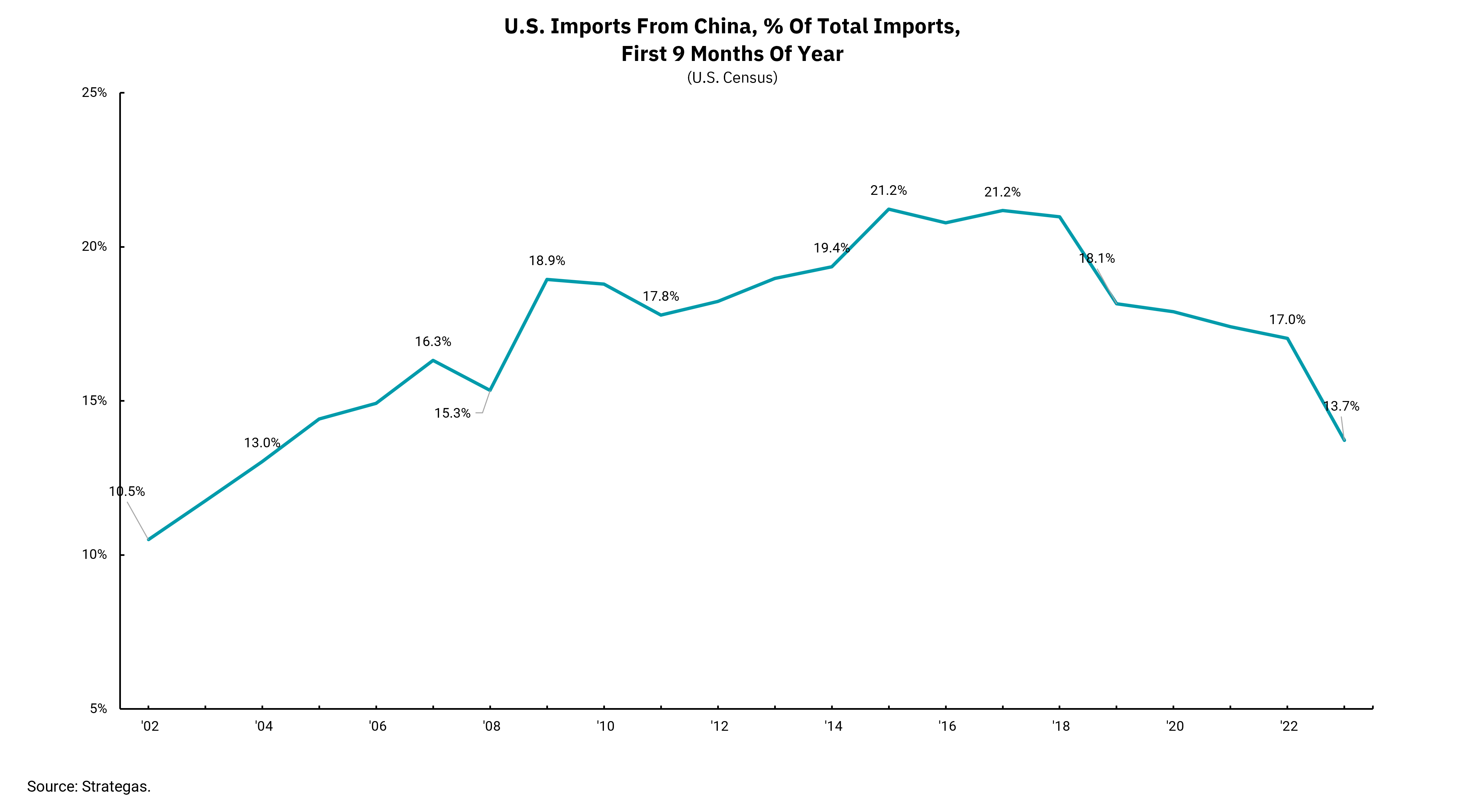
US imports from China continue to decline
Reduction in bilateral trade may lead to higher prices
President Biden is scheduled to meet with his Chinese counterpart, President Xi Jinping, on Nov. 15 at the Asia-Pacific Economic Cooperation Forum in California. Political and market analysts will watch for any sign of thawing or hardening U.S.-China relations. In the past several years, the world's two superpowers have had many diverging interests, with some commentators calling it a new cold war between the two countries. Any positive development from the meeting between the two leaders would likely be constructive for the long-term view of the global economy. However, recent trends have not been positive, and the lack of cooperation between the two countries has resulted in the U.S. Commerce Department ordering new restrictions to stem the flow of chips used in artificial intelligence applications to China.
This latest action comes from many more tariffs and economic restrictions that began in 2018. This week's chart shows U.S. imports from China as a percent of total U.S. imports, using the first nine months of the year for comparative purposes. There is a clear uptrend from the beginning of the data in 2002 until 2018. Then, once tariffs were introduced, the decline was immediate and has continued to this day.
However, this decline was not just due to tariffs, as the onset of the global pandemic laid bare the risks of the U.S. having so much of its production overseas. China was pursuing a “zero-COVID” policy, which led to entire cities and ports being shut down for limited cases of COVID-19. Consequently, produced goods were tangled in a web of supply chain bottlenecks.
For the U.S., this has resulted in a shift in production capacity. Some U.S. companies have moved their manufacturing operations to countries such as Vietnam, Bangladesh or North America. Recent data shows the U.S. now imports more from Mexico than China. The reduction in bilateral trade between the U.S. and China is a significant theme of deglobalization. It may be reflected in higher prices for U.S. and global consumers as the global economy becomes less "efficient“. Reduced overall output is also a risk as less economic cooperation, in the form of trade, will mean less incentive for each country to listen to each other as global issues arise going forward.
Get By the Numbers delivered to your inbox.
Subscribe (Opens in a new tab)